|
Rotten Library > The Occult > Kabbalah
Kabbalahaka Qabala, Cabala, Kabala, Qabballa, etc.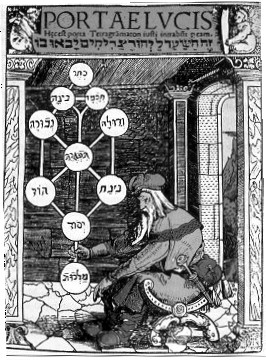 Imagine you're Madonna. You're too smart for Scientology, but not calm enough for Taoism. You've pretty much burned your bridges with Catholicism. And Methodism was never really an option. So where do you go for your religious fulfillment?
Imagine you're Madonna. You're too smart for Scientology, but not calm enough for Taoism. You've pretty much burned your bridges with Catholicism. And Methodism was never really an option. So where do you go for your religious fulfillment?If you're thinking Hinduism, well, actually she was over that back in the '90s after it failed to catch on as the Next Big Thing. Her current fixation, kabbalah, might have more potential. Technically, kabbalah is not a religion, and it never was. It originated around the 11th century as an outgrowth of earlier Jewish esoteric-occult traditions. Kabbalah is mainly based on two texts, the Sepher Yetzirah ("the book of creation") and the Zohar ("the book of enlightenment"). Sepher Yetzirah is a collection of secret traditions supposedly passed down from Abraham. It describes the structure of the universe and the method of its creation, including an extremely convoluted series of planes of existence, based on geometry and key numerical sequences derived from the Hebrew alphabet. While probably not dating back to the time of Abraham, whenever that actually was, it is the older of the two texts and probably runs at least as far back as the second century B.C.
The Zohar is a commentary on the Pentateuch, the first five books of both the Jewish and Christian bibles. OK, maybe "commentary" isn't the right word. The Zohar claims that the words of the Torah are simply a smokescreen behind which the real meaning of the Jewish scriptures lurks, like an ancient stereogram: you can't see it unless you're looking past it. Together, the books outline a sweeping vision of the structure of reality, including guidelines on how to alter it in nontraditional ways, which more or less amount to magic. Based on the two key texts, medieval occultists and Jewish mystics created a massive body of writings about metaphysics, alchemy and magic. Because it covers material related to the Old Testament, kabbalah was adopted by both Jews and Christians. Kabbalism also led to the development of Hasidism among Eastern European Jews.
At the top of the diagram is Kether, "The Crown", which represents the divine intelligence of God, from which all of creation emanates. The three pillars emanate down from Kether all the way down to Malkuth at the bottom. (The word means "Kingdom"; the bottom sephira is also sometimes called Shekhinah.) Kether is the angle at which reality points toward the creator; Malkuth is the angle at which is points toward His creation -- the earthly world. In traditional kabbalism, there are 10 sephiroth, although some schools teach of a "hidden" 11th in the middle of the diagram. Each sephira has different characteristics and is represented by a different Hebrew letter, which also corresponds to a number. The 10 sephiroth are connected by 22 lines, known as "paths," each of which carries a specific meaning. Some occult traditions teach that the paths correspond to the major arcana in the Tarot. The chart comes to life as a result of emanations, a concept which covers the movement of will, force, divine spark, light, energy and reality from God to creation. Emanations are the manifestation of divine intelligence as a material or metaphysical thing, such as an angel or a soul. Because the shape of emanations is outlined by the Tree of Life (supplemented by information contained in numerous other kabbalistic writings), the Tree and the Hebrew alphabet can be used to calculate the "true names" of things. If you know the true name of something, you can control it, which quickly led medieval kabbalists to become ritual magicians (as well as inspiring medieval ritual magicians to become kabbalists). With kabbalistic secrets firmly in hand, the well-informed can construct magic words that presumably empower users to command the very forces of the universe. Angels and demons, in particular, are susceptible to this sort of control. Truly ambitious sorcerers also sought the true name of God, the most powerful magic word imaginable. The search for God's true name took on epic proportions during the middle ages. The name was referred to as the Tetragrammaton, because it was believed to have four letters.
Finding the name in the Bible, of course, was far too easy. Obviously, recipients of secret knowledge would have a better name, a more powerful name. Unfortunately, no one could quite agree on what that name was, although a number of alternatives were proposed, such as AGLA or ADNI. None of these names hold up to the obvious test: After pronouncing them, neither divine wrath nor infinite power arrives within any reasonable time frame. Other esoteric concepts were covered in some depth by the kabbalists. Many kabbalists were also alchemists and scientists. As a result, some kabbalistic texts about the nature of emanations and the behavior of light (as a divine power) have a remarkable power even to this day. For instance, one Latin kabbalistic text from the Middle Ages discusses the properties of spirit and body in some detail. If you substitute "spirit" for "energy" and "matter" for "body", the text looks suspiciously like a sneak preview of Einstein's theory of relativity.
When it started, the study of kabbalah was secretive, especially among medieval Christians who feared the wrath of the Inquisition. After Aleister Crowley exposed the secrets of the Golden Dawn in the early 20th century, the cat was out of the bag, and kabbalah began to be talked about among the religious intellectuals of the day. Crowley himself wrote extensively about the kabbalah for the general public, as well as for his fellow students of esoterica. The movie Pi (1998) was a cult hit featuring a gang of malevolent Hasidic Jews who are searching for a way to decipher the true name of God from the number codes in the Torah. The movie coincided with a revival of mainstream interest in kabbalah. The latest iteration of kabbalism has more in common with the New Age than with traditional occultism. Kabbalah centers (both Jewish and non-Jewish versions) have popped up around the United States.
Although the new kabbalism downplays claims of exotic superpowers, the magical aspect of kabbalism is still an important part of the modern movement. While the conceptual underpinnings of kabbalah are pretty sophisticated, you can still shout "Yahweh sucks" at the top of your lungs for hours on end without producing the slightest whiff of brimstone. You might get hoarse, but that's not exactly an impressive display of God's wrath. On the other hand, you can do the same thing using "Allah," "Vishnu" or "Jesus" in the place of Yahweh. Kabbalism isn't any more disreputable than any other spiritual path, it's just more explicit in telling you how to get what you want. You could do worse.
|
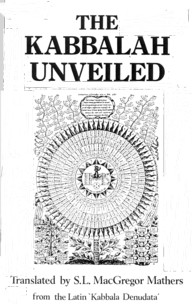 The Zohar was first seen in public during the 13th century, offered up by Moses de Leon, a Spanish Jew who claimed it was the work of a second-century miracle-working rabbi. After de Leon's death, there were numerous charges that the work was a forgery. There is quite a bit of legitimate controversy around the book, but the scholarly consensus is that the Zohar legitimately conveys a tradition that predates the 13th century, including several elements found in Jewish and Christian
The Zohar was first seen in public during the 13th century, offered up by Moses de Leon, a Spanish Jew who claimed it was the work of a second-century miracle-working rabbi. After de Leon's death, there were numerous charges that the work was a forgery. There is quite a bit of legitimate controversy around the book, but the scholarly consensus is that the Zohar legitimately conveys a tradition that predates the 13th century, including several elements found in Jewish and Christian 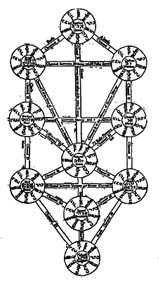 The most readily identifiable concept in kabbalism is the Tree of Life, a diagram that is essentially a map of reality. The Tree of Life consists of three columns known as "pillars", and 10 sephiroth, or spheres, each of which represents an aspect of the process God used to create the world.
The most readily identifiable concept in kabbalism is the Tree of Life, a diagram that is essentially a map of reality. The Tree of Life consists of three columns known as "pillars", and 10 sephiroth, or spheres, each of which represents an aspect of the process God used to create the world. 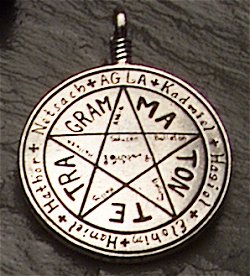 The Torah provides one version of this name, of course, which practicing Jews are forbidden to speak -- YHWH, pronounced as Yahweh (or JHVH, Jehovah) by those who are not especially worried about eternal damnation and a divine curse. YHWH is derived from the first letter of each Hebrew word God spoke to Moses from the burning bush story found in Exodus. The rough English translation of the statement is "I am who am", "I am who I am", or "I am that I am."
The Torah provides one version of this name, of course, which practicing Jews are forbidden to speak -- YHWH, pronounced as Yahweh (or JHVH, Jehovah) by those who are not especially worried about eternal damnation and a divine curse. YHWH is derived from the first letter of each Hebrew word God spoke to Moses from the burning bush story found in Exodus. The rough English translation of the statement is "I am who am", "I am who I am", or "I am that I am."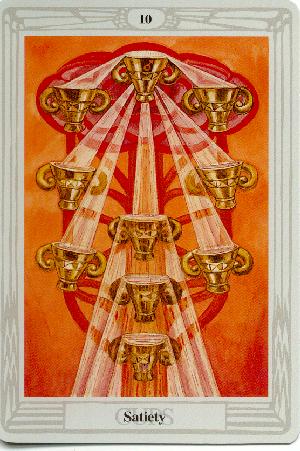 To a greater or lesser extent, kabbalism is the basis of nearly every tradition covered under the general heading of "occultism". Kabbalah is the basis for the rumored occult practices of the
To a greater or lesser extent, kabbalism is the basis of nearly every tradition covered under the general heading of "occultism". Kabbalah is the basis for the rumored occult practices of the 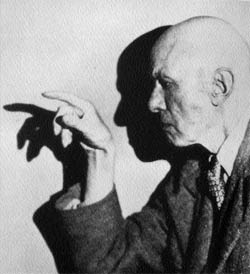 Perhaps partly as a result of widespread coverage of Scientology's quirks, a fair number of celebrities have embraced kabbalism as the spiritual flavor of the month. In addition to Madonna, celebrity kabbalists include Elizabeth Taylor, Demi Moore, Mick Jagger, Jeff Goldblum, Ivana Trump, and Roseanne Barr.
Perhaps partly as a result of widespread coverage of Scientology's quirks, a fair number of celebrities have embraced kabbalism as the spiritual flavor of the month. In addition to Madonna, celebrity kabbalists include Elizabeth Taylor, Demi Moore, Mick Jagger, Jeff Goldblum, Ivana Trump, and Roseanne Barr.